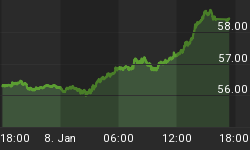Once upon a time there was a tailor. He lived in Roman times and his name was Thadeus. He did a brisk business predominantly with officers in the Emperor's imperial army as a purveyor of fine togas, sandals and accessories. Besides being purveyors of fine togas to the rest of the world the Romans knew a thing or two about money seeing as how they invented the stuff. In the Republic money was minted in the Temple of Juno Moneta on the Capitoline Hill (our word "money" comes from Moneta). Currency of the day was metal based and contact with the Greeks prompted the Romans to introduce silver coinage in 269 BC. They used a Greek-style silver coin in addition to the bronze as for another hundred years. Then, in or about 187 BC, they reorganized their system and from this overhaul came the denarius, a silver coin and a gold coin called an aureus. The cost for an ensemble (toga/suit, sash/belt and sandals) way back in Roman times was roughly one ounce of gold. So for argument sake we shall say that the average middle class Roman male could visit Thadeus and have himself outfitted for roughly the equivalent of one ounce of gold.
Fast forward, if you will, to 1920. The Federal Reserve had been minted seven years earlier in 1913 with the mission statement, or raison d'etre if you will, of stabilizing the economy and financial system at large. In that year there was quite a successful tailor named Moishe who lived in New York, New York. He did a roaring business and primarily catered to a bunch of upstart heathens on Wall Street. Moishe typically charged a little more than twenty bucks for a tailored suit with a pair of shoes and leather belt. Not surprisingly, the price of gold was 'fixed' back in those days. We were on the gold standard and the official price of an ounce of gold was officially worth - you might have guessed it, a little more than twenty bucks.
Now folks, lets move ahead to the year 2000 and stop in and pay a visit to Benadicto, who is still a successful clothier on Manhattan's Upper East Side. Benny prides himself on not being undersold by anyone in the business. You know, you could buy a decent two piece suit, pair of leather loafers and a belt from Benny for slightly more than 400 bucks (that would be U.S. currency). Of course the price of gold today is (drum roll) roughly rigged at 400 bucks. Funny isn't it, I mean how the more things change the more they stay the same? Think about this for second, the cost of a suit, shoes and belt hasn't really changed (in gold terms) in more than two thousand years! But low and behold, look and see what has happened to the same in fiat dollar terms in a scant seventy years. Our currency today has been debased to the tune of 95 % over this time period - all on the Fed's watch. God help us all. Imagine where we might be without the Federal Reserve standing watch, safeguarding the integrity and stability of the economy?
A performance this poor does not happen by accident. In fact, silly buggers like me would swear up and down on a stack of bibles that there must be some kind of nefarious activity going on to produce such awful results. I'd like to think that no where in the real world would such a pathetic track record be tolerated. Can anyone imagine a business being heralded for a job well done turning dollars into nickels? This is exactly what the Federal Reserve has done with our money, cheered on by government. This perpetual erosion of our purchasing power through currency debasement/inflation has served as a hidden tax levied on all by spendthrift governments. This indirect hidden form of taxation has typically been employed by governments/central banks only after more direct visible forms of taxation maxed out. Must make you want to stand up and shout bravo eh?
Upon closer scrutiny, we can see that the Federal Reserve has presided over the stock market crashes of 1921, 1929, 1987 and 2000. They were at the helm for the Great Depression of 1929 - 1939 as well as recessions in 1953, 1957, 1969, 1975, 1981 as well as the early 2000's. With our government cheering this horse on, interest on Federal debt now constitutes half of all government spending. Now you've got to admit - that's some kind of track record. To steal a cliché, these guys really are good.
Having digressed, I apologize and I'd now like to get back to my original line of thought regarding tailors. Ran into a good friend on the weekend, hadn't seen him in a number of years. He looked good and the way he was dressed - gotta tell ya- really sharp. When I commented on how sharp he looked in his suit he turned and snapped, "Isn't it amazing what 1200 bucks still buys you?" I answered, "It surely is isn't it?"
As I sit here penning this fictional account of three tailors, watching CNBC, another tale comes to mind - the one about a very sick currency and stock market. In fact, they were so sick that ordinary folks wanted to liquidate their holdings of each and buy something which they felt would retain its value. Their first instinct was to buy precious metals but a bunch of price riggers trashed the price of these so ordinary folks would be 'tricked' into thinking that buying government bonds was the best 'flight to quality' trade out there. Oh well, that's a story for another day.
















